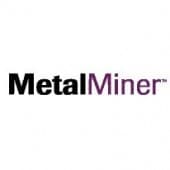The steel industry has been here before.
Where is “here”? The place of urging the federal government and US Congress to come up with a pro-US-manufacturing agenda that benefits both business and the public good. But the introductory tenor of both the latest public policy agenda from the American Iron and Steel Institute (AISI), and the follow-up conference call makes it sound as though we’ve heard this all before.
“The North American steel industry strongly supports the implementation of a national pro-manufacturing agenda to ensure U.S. manufacturers are able to compete in today’s global economy,” the document reads, and goes on to outline the industry’s position on international trade, energy and tax policy, environmental concerns and transportation and water infrastructure.
But it seems the industry and the government always have a hard time moving forward together.
Current Economic State of Things: Yellen Now Tellin’
Industry watchers have been paying a lot of attention to the US Federal Reserve lately, trying to gauge what will happen with future quantitative easing.
When Fed Chairwoman Janet Yellen recently spoke publicly for the first time since taking over for Big Ben Bernanke, she took an upbeat tone, predicting that the US economy will continue to recover; even though interest rates should stay near zero until unemployment breaks below 6.5%, Yellen’s Fed expects to continue pulling back QE.
According to the Times, Yellen “also downplayed concerns about turbulence in emerging markets like Turkey, which has been exacerbated by the Fed’s retreat. ‘We have been watching closely the recent volatility in global financial markets,’ she said. ‘Our sense is that at this stage these developments do not pose a substantial risk to the U.S. economic outlook.’”
That is, of course, if the US Commerce Department and US Congress do its job the way AISI wants – and needs – it to.
With international trade and tax policy as two key lynchpins in AISI’s agenda, the corresponding federal bodies have their work cut out for them. Although the Fed would be more concerned with financial markets in emerging countries, US manufacturers are worried about competing with their emerging-market counterparts, and look to Congress for tax reform and to Commerce for preventing “injurious surges” (i.e. imports), among other things.
To improve competitiveness, Congress needs to reform the tax code, while maintaining incentives related to accelerated depreciation, the Section 199 domestic activity production deduction, interest expense deduction, and LIFO accounting methodology, said Chuck Schmitt, president at SSAB Americas and an AISI vice chairman, on the call last week.
How quickly will any of this come to pass? The essence of that question (“how comprehensively are you expecting Congress to deal with the tax bill – or will they just deal with it bit by bit?”) was posed to the AISI panel, among them Mike Rippey, president and CEO of ArcelorMittal USA, and Mike Rehwinkel, executive chairman of Evraz North America; and based on the blank space I have in my notes following the written question, none of them expect quick results.
2014 EPA Regulations
If it’s not tax policy and trade, it’s environmental regulations – the policy issue on the main plate of many domestic steelmakers. When I asked the panel what can be done to improve transparency between the EPA and the steel industry, Tom Gibson, president and CEO of AISI, told me that they’re “engaged with the EPA every day, and we know what the agency is doing right now…I don’t have complaints about access, we get our data and [make our] case to them.”
Greenhouse gases is the primary issue for the steel industry as big users of electricity, he said. The EPA has “got our complete attention.”
by Taras Berezowsky
